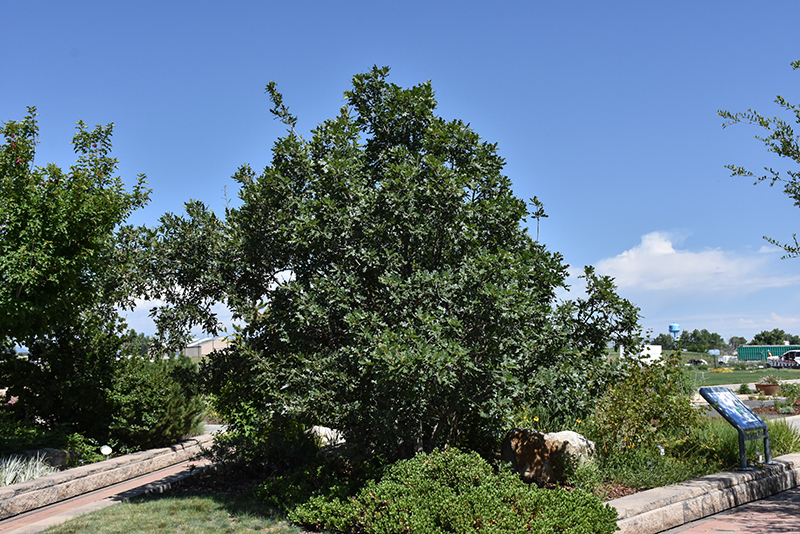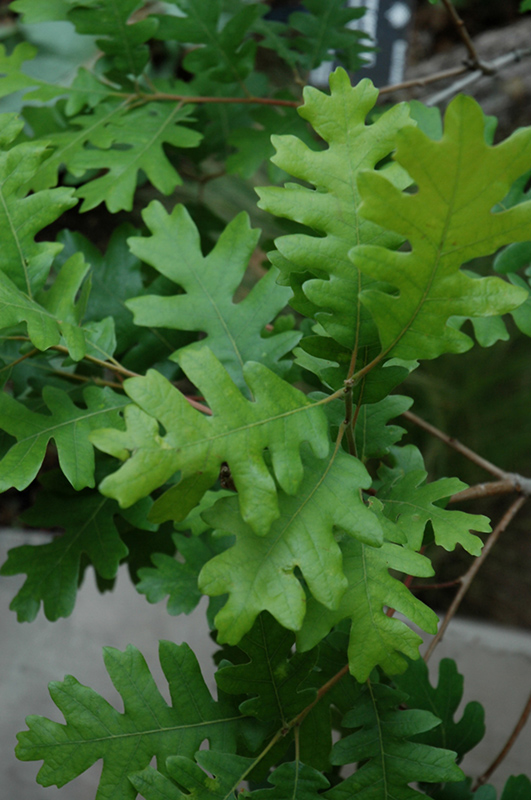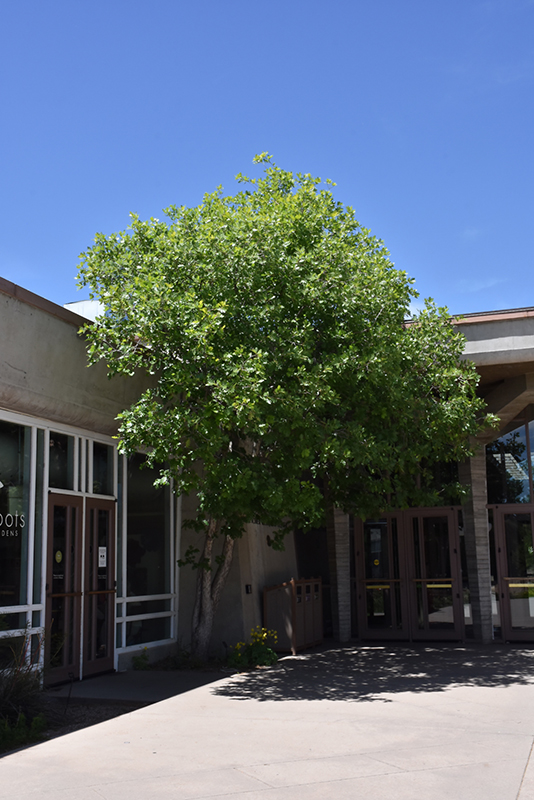Height: 25 feet
Spread: 15 feet
Sunlight:
![]()
Hardiness Zone: 4a
Other Names: Scrub Oak, Oak Brush, Rocky Mountain White Oak
Description:
A small tree or large shrub that may vary greatly in size in different locations, with branches that are are irregular, crooked and flexible; young plants can form a dense thicket, suitable as a windbreak; very tolerant of drought and poor soils
Ornamental Features
Gambel Oak has dark green foliage with grayish green undersides on a tree with an oval habit of growth. The glossy lobed leaves turn outstanding shades of yellow, orange and red in the fall, which persists throughout the winter. It produces brown acorns with gold overtones from late summer to late fall. The fruit can be messy if allowed to drop on the lawn or walkways, and may require occasional clean-up.
Landscape Attributes
Gambel Oak is a dense multi-stemmed evergreen tree with a shapely oval form. Its average texture blends into the landscape, but can be balanced by one or two finer or coarser trees or shrubs for an effective composition.
This tree will require occasional maintenance and upkeep, and can be pruned at anytime. It is a good choice for attracting squirrels to your yard. Gardeners should be aware of the following characteristic(s) that may warrant special consideration;
- Messy
- Suckering
Gambel Oak is recommended for the following landscape applications;
- Accent
- Mass Planting
- Hedges/Screening
- Windbreaks and Shelterbelts
- Naturalizing And Woodland Gardens
Planting & Growing
Gambel Oak will grow to be about 25 feet tall at maturity, with a spread of 15 feet. It has a low canopy with a typical clearance of 2 feet from the ground, and should not be planted underneath power lines. It grows at a slow rate, and under ideal conditions can be expected to live to a ripe old age of 150 years or more; think of this as a heritage tree for future generations!
This tree should only be grown in full sunlight. It is very adaptable to both dry and moist locations, and should do just fine under average home landscape conditions. It is particular about its soil conditions, with a strong preference for poor, alkaline soils. It is highly tolerant of urban pollution and will even thrive in inner city environments. This species is native to parts of North America.




